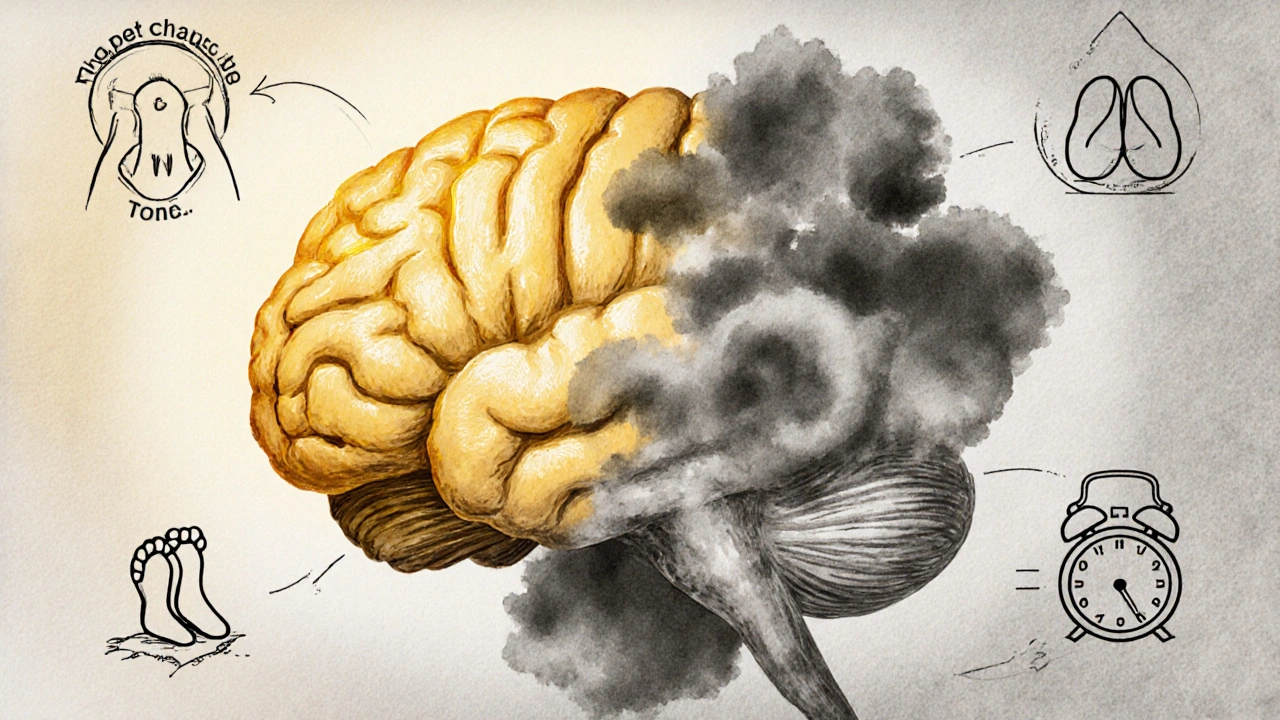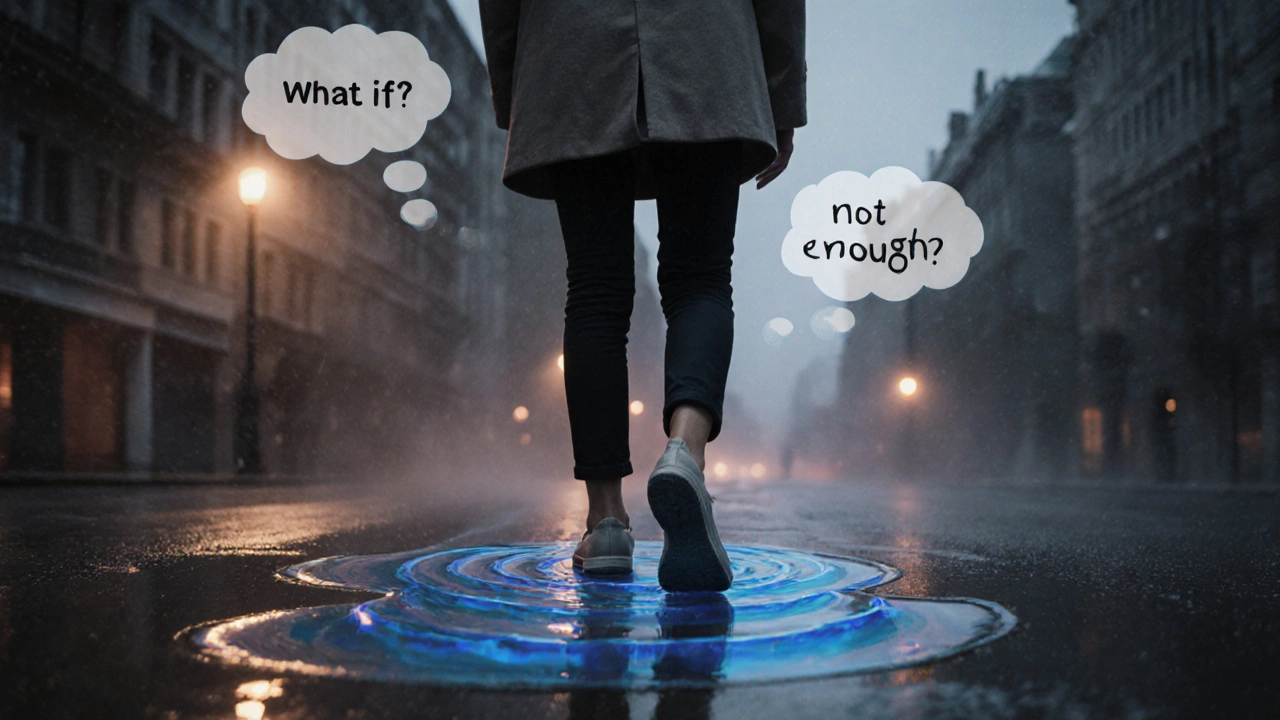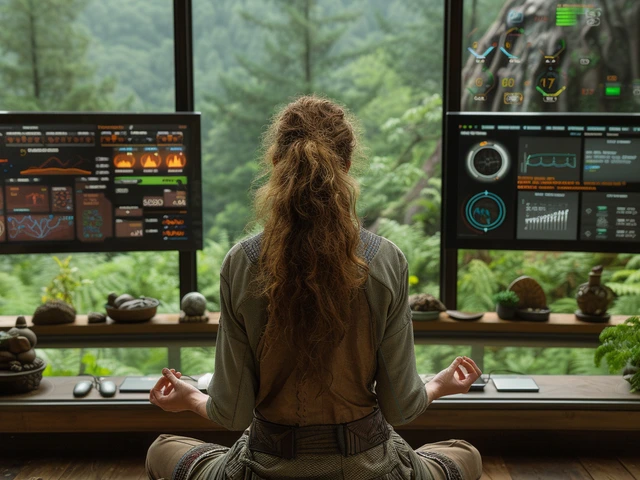
Mindfulness Practice Timer
Begin Your Practice
Set your timer and follow the gentle breathing prompts
When your mind feels like a browser with 50 tabs open, all playing audio at once, that’s not just stress-it’s your mental health screaming for a reset. You don’t need a week-long retreat or a fancy app to fix it. The simplest, most powerful tool you already have access to? Mindfulness. Not as a trend, not as a buzzword, but as a daily habit that rewires your brain to handle pressure, quiet anxiety, and stop emotional spirals before they start.
What Mindfulness Really Is (And What It’s Not)
Mindfulness isn’t about emptying your mind. That’s a myth. It’s not sitting cross-legged on a cushion, chanting, or waiting for some zen moment to hit you. Mindfulness is paying attention-on purpose-to what’s happening right now, without judging it. It’s noticing the tightness in your shoulders when your boss sends an email. It’s hearing the sound of your breath when you’re lying in bed at 2 a.m., heart racing. It’s realizing you’ve eaten three cookies without tasting them-and choosing to pause before the fourth.
Research from Harvard Medical School shows that just eight weeks of daily mindfulness practice can shrink the amygdala, the brain’s fear center, while thickening the prefrontal cortex, the area responsible for calm decision-making. That’s not magic. That’s neuroplasticity in action. Your brain physically changes when you train it to be present.
How Mindfulness Directly Improves Mental Health
Let’s be clear: mindfulness isn’t a cure for depression or bipolar disorder. But it’s one of the most effective tools we have to manage symptoms-and prevent them from getting worse.
For anxiety, mindfulness breaks the cycle of rumination. Instead of getting stuck in loops of “what if?” and “I can’t handle this,” you learn to notice the thought, label it (“That’s anxiety”), and gently bring your focus back to your breath or the feel of your feet on the floor. A 2023 meta-analysis in JAMA Psychiatry found that mindfulness-based therapy reduced anxiety symptoms as effectively as antidepressants for people with mild to moderate anxiety, with fewer side effects.
For depression, mindfulness helps you step out of the autopilot mode that keeps you stuck in negative thought patterns. Instead of believing thoughts like “I’m worthless” or “Nothing will ever get better,” you learn to see them as passing mental events-not facts. This shift doesn’t erase pain, but it stops you from drowning in it.
And for trauma? Mindfulness gives you back control. Trauma often leaves people feeling disconnected from their bodies. Mindful body scans-slowly bringing attention to each part of your body-help reconnect mind and body, reducing hypervigilance and flashbacks. Veterans with PTSD who practiced mindfulness for 12 weeks reported a 40% drop in intrusive thoughts, according to a study by the VA’s National Center for PTSD.
The Science Behind the Calm
Here’s what’s actually happening inside your brain when you practice mindfulness:
- Lower cortisol: Your stress hormone drops after just 10 minutes of mindful breathing. A 2024 study in Psychoneuroendocrinology showed that daily 12-minute sessions reduced cortisol levels by 21% over four weeks.
- Stronger vagus nerve tone: This nerve connects your brain to your heart and gut. When it’s active, you feel calmer. Mindfulness boosts vagal tone, which lowers heart rate and improves digestion.
- Reduced default mode network (DMN) activity: That’s the brain system that runs your inner chatter. Overactive DMN = overthinking. Mindfulness quiets it down.
- Increased gray matter in the hippocampus: This region handles memory and emotional regulation. Chronic stress shrinks it. Mindfulness rebuilds it.
These aren’t vague benefits. They’re measurable, repeatable, and accessible to anyone with five minutes a day.

How to Start-No Experience Needed
You don’t need to meditate for an hour. You don’t need to buy a $100 app. You just need to begin.
- Start with your breath. Sit or lie down. Close your eyes if it helps. Breathe naturally. Count each inhale and exhale up to 10. When you get distracted (you will), gently return to 1. Do this for 3 minutes. That’s it.
- Turn routine moments into practice. Brushing your teeth? Feel the bristles. Washing dishes? Notice the warmth of the water. Walking to your car? Feel your feet hitting the ground. These aren’t distractions-they’re anchors.
- Use the STOP technique when overwhelmed:
- Stop-pause what you’re doing.
- Take a breath-deep and slow.
- Observing-what’s happening in your body? Your thoughts? Your emotions?
- Proceed-choose your next move with awareness, not reaction.
- Set a daily reminder. Put a sticky note on your mirror, or set a silent alarm for 8 a.m. or 6 p.m. No guilt if you miss a day. Just start again.
Consistency matters more than duration. Five minutes daily for a month will change your brain more than an hour once a week.
Common Mistakes (And How to Avoid Them)
Mindfulness isn’t hard-but people mess it up in predictable ways.
- “I’m no good at it because I keep getting distracted.” That’s not failure-that’s the practice. The moment you notice you’re distracted, you’ve succeeded. You’re becoming aware.
- “I tried it and it didn’t work.” Did you try it for 3 days? Or 30? Real change takes weeks, not minutes.
- “I’m too busy.” You’re not too busy. You’re avoiding discomfort. Mindfulness isn’t about adding time-it’s about reclaiming the moments you’re already wasting on autopilot.
- “I only do it when I’m stressed.” That’s like only exercising when you’re out of breath. Build the habit when you’re calm, so it’s there when you’re not.

When Mindfulness Isn’t Enough
Mindfulness is powerful-but it’s not a replacement for therapy, medication, or professional support. If you’re struggling with severe depression, suicidal thoughts, trauma, or psychosis, mindfulness can help as a supplement, but it won’t fix the root cause alone.
Think of it like brushing your teeth. It prevents cavities, but if you have a deep infection, you still need a dentist. Same here. Pair mindfulness with therapy if you’re in crisis. Cognitive Behavioral Therapy (CBT) and Acceptance and Commitment Therapy (ACT) both integrate mindfulness and are proven to work better together than alone.
And if you’ve tried mindfulness and it makes you feel worse? You’re not broken. Some people with trauma experience heightened anxiety when focusing inward. In that case, try grounding techniques instead-like naming five things you can see, four you can touch, three you can hear. That’s still mindfulness, just adapted.
Real Lives, Real Change
Anna, 34, a nurse in Brisbane, started practicing mindfulness after burnout left her crying in the hospital bathroom every Friday. She began with two minutes of breathing before her shift. Within three weeks, she stopped snapping at colleagues. After two months, she slept through the night. “I didn’t fix my job,” she says. “I fixed how I responded to it.”
Jamal, 58, a retired teacher with chronic anxiety, used to spiral over minor mistakes. He started using the STOP technique before replying to emails. Now, he waits 10 seconds. “I used to think my thoughts were truths,” he says. “Now I know they’re just weather. They pass.”
You don’t need to be a monk. You don’t need to quit your job. You just need to pause-once, twice, five times a day-and remember you’re alive in this moment. Not the past. Not the future. Right here.
Can mindfulness replace therapy for mental health issues?
No, mindfulness is not a replacement for professional therapy, especially for clinical conditions like major depression, PTSD, or bipolar disorder. It works best as a supportive tool alongside therapy or medication. For mild anxiety or stress, it can be highly effective on its own-but if symptoms are severe or persistent, seek help from a licensed mental health provider.
How long until I feel the benefits of mindfulness?
Most people notice small shifts-like feeling less reactive or sleeping better-within two to four weeks of daily practice. Deeper changes, like reduced anxiety or improved emotional resilience, usually show up after six to eight weeks. The key is consistency, not duration. Even five minutes a day adds up.
Do I need to meditate to practice mindfulness?
No. Meditation is one way to practice mindfulness, but it’s not the only way. You can be mindful while walking, eating, washing dishes, or even waiting in line. The goal isn’t to sit still-it’s to be aware. Any moment you notice your mind wandering and gently bring it back, you’re practicing.
What if mindfulness makes me feel more anxious?
Some people, especially those with trauma or severe anxiety, feel overwhelmed when turning inward. If this happens, switch to grounding techniques: name five things you see, four you can touch, three you hear, two you smell, one you taste. This keeps you anchored in your body without diving into thoughts. You can also try walking mindfully or listening to calming sounds instead of silent meditation.
Is there a best time of day to practice mindfulness?
There’s no single best time-it’s about what works for your life. Many people find morning practice sets a calm tone for the day. Others prefer evening to unwind. The most important thing is to pick a time you can stick to. Even 3 minutes at the same time every day builds a habit faster than 20 minutes once a week.
Next Steps: Make It Stick
Start tomorrow. Not next week. Not after the holidays. Tomorrow.
Set a 5-minute timer. Sit quietly. Breathe. When your mind races (and it will), don’t fight it. Just notice. Then return to your breath. Do this for seven days. Then ask yourself: Do I feel a little lighter? A little less on edge? A little more in control?
If the answer is yes, you’re already changing. You don’t need to be perfect. You just need to show up. Again. And again. And again.





